Sharlyn J. Lauby's Blog, page 87
January 16, 2020
6 Career Development Strategies Employees Should Consider

Last week, I wrote an article about the career development strategies that organizations need to consider. It’s important for organizations to make investments in an employee’s career and future with the organization. If they don’t, it could result in high turnover.
But that doesn’t mean employees are off the hook. Employees
need to have their own personal career strategies. They need to be able to
articulate to their managers what they want in terms of a career. In addition,
employees should have an honest opinion about the knowledge, skills, and
abilities they need to work on.
If you’re looking for a little creative inspiration when it comes to developing your own career development strategy, here are a few articles that you might find helpful:
The
Top 5 Soft Skills That Employers Should Look For
Soft skills are in big demand. Employers want to identify
them in candidates. Learn the top soft skills that employers look for when
hiring.
Integrity:
6 Ways to Improve Trust and Values
Integrity is the foundation of trust and respect. Good
leadership needs strong values. Here are 6 things to focus on to improve organizational
integrity.
Innovation
and Leadership: 7 Qualities Organizations Need for Success
Leadership is needed more today than ever today. Innovation
is key to success and growth. Here are 7 qualities in strong organizational
leadership.
10
Ways to Be a Better Team Player
Being a better team player can be a boost for your career.
Companies look for it in promotions. Learn 10 ways to be a better team player.
How
to Get Better Results in Your Work
Results at work can lead you to career success. But
delivering a great outcome doesn’t just happen. Learn 7 steps that will help
you get better results at work.
Networking:
7 Proven Ways to Grow Your Career
Whatever stage you’re at in your studies or career,
networking can connect you with exciting opportunities. Learn to network
successfully.
Understanding what companies are looking for can help you
define where you’d like to see your career now and in the future. It can help
you identify the resources you’d like when negotiating with the company. It can
also help with your overall work performance (which often helps with your
paycheck, if you know where I’m going).
Career development strategies benefit both individuals and organizations. The conversations should be happening on a regular basis. Don’t miss out on your opportunity to talk about your future career goals. Be prepared!
Image captured by Sharlyn Lauby at the Qualtrics X4 Summit in Salt Lake City, UT
The post 6 Career Development Strategies Employees Should Consider appeared first on hr bartender.






January 14, 2020
Navigating Conflict of Interest Matters at Work – Ask #HR Bartender

I don’t know that we’ve spent a lot of time talking about
conflict of interest issues. For that reason, I’m glad we’re getting the chance
here. I believe there’s a takeaway for everyone in today’s article. An HR
Bartender reader writes:
Five years ago, I was hired by
city government in the building department. When I signed my new hire
paperwork, there was a policy statement that all new hires after 2011 were not
allowed to sell real estate in the city due to conflicts of interest.
I have a real estate license.
Employees hired before 2011 are still selling and are allowed because they were
‘grandfathered’ in. Since it’s a conflict of interest, is there such a thing?
I actually do not see the
conflict unless we use our positions to gain the listing and selling of real
estate. There is actually a city ordinance stating nobody can ‘represent’ as
agent in any real estate transaction, but the department wanted to create a
stricter policy specifically dealing with selling real estate. Please give me
your thoughts on this. Thank you.
Conflict of interest situations exist in both the public and
private sector. They happen in our professional and personal lives. We’re not
going to do a deep dive into government conflict of interest rules today, but I
wanted to get some insights about dealing with conflict of interest matters at
work.
I asked our friend Kate Bischoff to share her knowledge.
Kate is an employment attorney and HR consultant at tHRive Law & Consulting LLC.
She’s shared her experience with us on several occasions. One of my favorites
are her comments in this article about the “Ageism
in the Workplace”.
Please don’t forget that Kate’s comments should not be
construed as legal advice or as pertaining to any specific factual situations.
If you have specific detailed questions, they should be addressed directly with
your friendly neighborhood labor attorney.
Kate, thanks for sharing your thoughts today. I feel like
we need to start with a definition. Is there an easy way to define conflict of
interest?

[Bischoff] Not really. Merriam-Webster
defines a conflict of interest in a situation like this as ‘a conflict between
the private interests and the official responsibilities of a person in a position
of trust’. So, if I’m the town mayor and I determine who gets the recycling
contract and I also own a recycling company, it would be a conflict of interest
if I consider my company for the recycling contract for my town. I’d get a
personal benefit because I grant contracts for my town.
In private employer settings, a conflict of interest would
be similar. For example, if I’m the chief financial officer (CFO) I’m
considering my wife’s certified public accounting (CPA) firm as the company’s external
auditor. My wife could get a bonus because of the work, and that benefits me
personally. So, a conflict of interest exists.
While these seem like pretty straightforward examples, often
when an employer is contemplating a conflict of interest situation, the facts
aren’t as easy as these and it takes time and fact finding to figure out if a
real conflict exists.
In my opinion, I have to agree with the reader that it
doesn’t seem very logical to “grandfather” people into a potential conflict of
interest. Are there circumstances where this might make sense?
[Bischoff] I’m struggling to figure out why grandfathering
is a good idea. In HR, we don’t typically make policies and grandfather in some
people unless it is benefit related. (And, we make grandfathering decisions a
lot when it comes to benefits.) Best I can figure is that one city employee
still wanted to sell real estate and thought it was unfair to make them stop.
In general, policies are designed to be universal and
exceptions are rare, if any. If we grandfather, we need to have specific,
documented reasons why we’re doing it. We do this because grandfathering is
specifically allowing people to be treated differently, creating risk. This is
an easily avoidable risk.
In my experience, I’ve seen situations where organizations
decide that something which was considered “okay to do” is no longer
“acceptable”. Can organizations explain those types of changes in ethics and
how can they do it?
[Bischoff] Absolutely. It can appear that we’re ‘cracking
down’, but often if we’re transparent about why we’re doing something, people
are more likely to understand why and accept the change. It doesn’t mean
they’ll like it, but they don’t have to.
Often, our changes have to do with being ethical and
consistent. Take for example reimbursement for alcohol while on business travel
and our policy is silent on the topic of alcohol. We’ve been reimbursing for
alcohol for years. The company decides to donate a large sum to Mothers Against Drunk Driving (MADD) as a part
of our annual giving. Our donation doesn’t seem in line with our reimbursement
practice, so we alter the policy to explicitly say we will no longer reimburse
for alcohol. We then have to go into communication mode about being consistent
externally and internally.
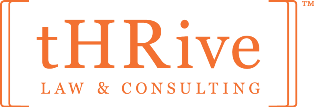
Speaking of ethics, I like to think we’ll agree that
organizations need to have an ethics standard and conduct some sort of ethics
training. What are 2-3 things that should be in an ethics program?
[Bischoff] I agree! Here are three things to consider:
Explain WHY these are our ethics. How did the organization develop them? (Hopefully, not cutting and pasting from another company.) Why are these ethical practices what we selected? Provide EXAMPLES of how the organization lives them. For example, if veracity is one of our core ethics, showing how when someone finds an error in a document, instead of glossing over it, the organization rewards the people who found the problem and then worked to fix it. Hold employees ACCOUNTABLE to the ethics. The examples should come with questions to the group about what they believe the organization should do in this situation to hold people accountable.
Last question. I realize that we could write volumes
about this, but how can an employee confront a conflict of interest issue in
their organization?
[Bischoff} Talk with leaders in the organization. Ask
questions about what is or could be or even as this reader suggests, challenge
the reasoning behind rules. Challenging the reasoning allows an organization to
be more self-aware of issues, alter where necessary, and be able to better
articulate why certain rules are important and effective.
A huge thanks to Kate for sharing her knowledge with us. Please be
sure to check out Kate’s blog for more insights and, of course, her
other articles here on HR Bartender.
None of us wants to face (or be involved in) a conflict of interest situation. Kate’s points about transparency and consistency are spot-on. Not only do organizations need to practice ethical behavior but they need to create the psychological safety that will allow employees to bring ethical questions to the surface. Practicing ethics is good for our wellbeing and the company’s bottom-line.
Image capture by Sharlyn Lauby while exploring the Wynwood District in Miami, FL
The post Navigating Conflict of Interest Matters at Work – Ask #HR Bartender appeared first on hr bartender.






January 12, 2020
Recruiting Strategy: Bots and 3 Workforce Ingredients

I’ve mentioned before how today’s recruiting
strategy needs three key constituents: regular full-time workforce, regular
part-time workforce, and contingent workers (i.e. freelancers, contractors,
consultants, etc.) Each group has a
unique recruiting as well as an engagement strategy
(which we’ve also talked about before).
BUY is where the company hires workers from the outside. The advantage to this approach is that the organization gets fresh perspectives and new ideas. The disadvantage is that it can be expensive to attract high performing workers from the outside.
BUILD is when the company develops their existing workforce. The upside is that this strategy is great for employee morale. The downside is that developing a future workforce takes time. It also means having the learning and development resources available.
BORROW is using freelancers or consultants when the need arises. Not every job is a full-time job, so the positive side to this approach is getting the necessary skills at the moment it’s needed. The negative side is keeping freelancers engaged so that, when you need them, they’re available and ready to work for you.
But a couple of years ago, I heard a speaker
that made me realize there’s a fourth constituent – bots. Yes, chatbots. The
groups we’ve talked about so far are all human beings. Advances in technology, like
artificial intelligence and bots, are allowing organizations
to do things never before possible.
Maybe what organizations need to consider in
their recruiting strategy is not only what work should be assigned to
full-time, part-time, or freelancers, but what work can be assigned to bots.
Now before you start thinking that this will eliminate the human workforce,
it’s important to realize that while bots are an important technological
advancement, they haven’t been developed to the point where they can replace
all human workers. I’m thinking If bots were considered the fourth key
constituent in today’s workforce, their role would look something like this:
BOTS would be used when the organization has a defined, predictable, repetitive task. The plus would be that the organization would gain consistency and scalability in managing these kinds of tasks. The minus would be return-on-investment as well as the perceived loss of human interaction.
I know bots are getting mixed reviews right
now, but I can see this fourth constituent being important in future staffing
discussions. Organizations need to ask: Is this a full-time, part-time,
freelance, or bot job? That will determine how an organization goes about
finding the worker. Do they buy it, build it in-house, have someone
occasionally work on it, or automate it?
The workforce is changing. Even if your organization isn’t looking at bots right now, it’s possible they will be in the future. HR and talent acquisition professionals need to be prepared for a strategic response.
Image captured by Sharlyn Lauby while exploring the streets of Atlanta, GA
The post Recruiting Strategy: Bots and 3 Workforce Ingredients appeared first on hr bartender.






January 10, 2020
Bookmark This! The Employee Wellbeing Edition
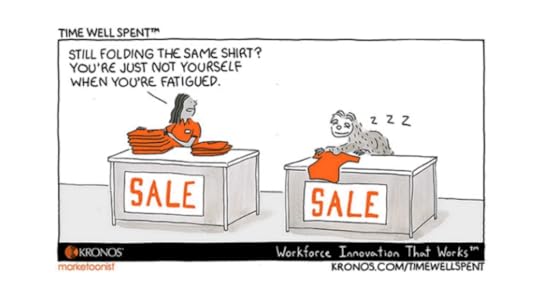
Happy 2020! I hope you had a fabulous holiday season and did
something festive to bring in the New Year. It seems kinda weird to say we’re
in 2020 when there’s been so much conversation about how 2020 defines the
future. I mean, the movie
Blade Runner was set in 2019!
With the New Year often comes a rush of adrenaline, we’re
super jazzed about putting the past behind us and focusing on the future. We
often have new goals or resolutions. Maybe we’ve made the commitment to start
something new like a class or developing a new habit.
One thing that is important to keep in mind is taking care of ourselves. Today’s Time Well Spent from our friends at Kronos reminded me of that. While I’m excited about the new year and all of the new projects I’m working on, I need to take care of me. Wellbeing matters! That includes getting the right amount of sleep. Here are a few articles that might help you balance your personal and professional life.
You
Can Work from Anywhere – But That Doesn’t Mean You Should
Technology is a wonderful thing that can give us
flexibility. We can quickly take care of a work emergency and get on with our
fun. But we must be careful not to let those 5-minutes here and 10-minutes
there rob us of our time to relax and recharge.
Tips
for Practicing Self-Care at Work
Organizations and individuals want the same thing. Finding ways to de-stress can help our personal wellbeing to professionally perform at our best. Don’t overlook these important self-care tips.
5 Tips for
Managing Stress at Work
According to The American Institute of Stress, our jobs
cause the biggest stress in our lives. It can show up as yelling at co-workers,
damage to property or machinery, or harm to our personal health. Simply
ignoring the signs isn’t the answer.
Employee
Self-Care: 10 Ways Organizations Can Be Supportive
Companies looking to improve engagement and retention need to examine the ways they support employee wellbeing and self-care. And employees need opportunities to relax and recharge in order to do their best work.
The New Year is exciting. I know I’m ready to take on
whatever it gives me. But I also need to remember to practice self-care so that
I stay healthy, both physically and mentally.
The post Bookmark This! The Employee Wellbeing Edition appeared first on hr bartender.






January 9, 2020
6 Career Development Activities that Organizations Should Consider

Organizations that are focused on employee engagement and retention need to consider career development as part of their strategy. Employees want to know that they have a future with the company they work for and part of that means knowing that the company is going to help them accomplish their career goals.
But career development is a broad term. It takes more than one program to create valuable and relevant development opportunities. I’m using the word relevant because career development isn’t just for employees. Career development helps organizations with future staffing needs.
Here are some resources and articles that you might find
helpful in putting together your career development strategies.
Building
Trust Is a Process, Not an Activity
Trust is critical for employee engagement and retention. A
culture of reliance helps with recruiting and retention. Our friends at Kronos
Incorporated shows us trust is a process, not just an activity.
5
Activities that Should Be in Every Career Development Program
Career development could be a
creative way companies fill future staffing needs. Every career development
program should include these 5 activities.
Why
Peer to Peer Learning Should Be Part of Your Training Strategy
Peer to peer learning is effective and affordable training.
Trainer Kathy Shurte shares her expertise on the value of peer to peer learning
in the workplace.
Organizational
Strategies for High Performance
High performance is a key part of business success. Good
management and leadership is critical. Here are a few tips and resources for
high performance.
A
Manager’s Guide for Conducting Effective 1:1 Meetings
Effective 1:1 meetings help to grow trust and build high
employee engagement. This is a practical resource to help managers conduct better
1:1 meetings.
Organizations
Need to Hold Managers Accountable for Developing Talent
Talent development is a foundational element of business
success. Managers should develop their teams and make it part of performance
expectations.
Business projections tell us that 2020 could be shaping up to be another tough year for recruiting. Employees will have many options. That puts the spotlight on career development. Organizations that invest in their employees will see the return on their investment in better engagement and reduced turnover.
Image captured by Sharlyn Lauby while exploring the streets of Salt Lake City, UT
The post 6 Career Development Activities that Organizations Should Consider appeared first on hr bartender.






January 7, 2020
6 Ways to Improve Your Business Acumen in 2020
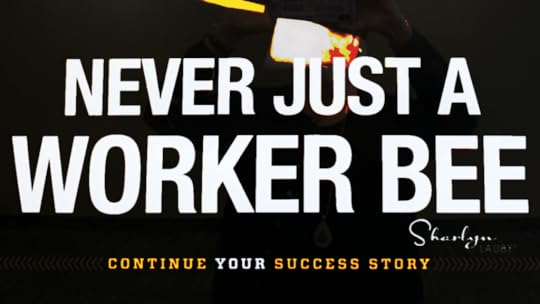
It’s probably not a surprise to anyone but
business acumen is one of the behavioral competencies in the Society
for Human Resource Management (SHRM) competency model.
It’s important to know the business, be able to talk about it, and make
decisions to help the business grow.
But honestly, it can be challenging to develop
business acumen. Oh sure, a lot of people throw business buzzwords around like
“customer journey” and “wheelhouse” but do they really know everything those
terms mean? In today’s business world, new concepts are being developed all the
time. It’s a challenge to stay on top, especially when your plate is already
full of work.
Personally, I find it helpful to take
inventory of the things I’m doing to stay on top of business. I love lists that
remind me to step back and just get focused. So, here’s my list of suggestions for
building business acumen.
Read (and listen to) the right stuff. I discovered an electronic newsletter called “Morning Brew” that helps me stay on top of business news. Trust me, I hate junk emails as much as the next person, but this isn’t junk. This Monday-Friday enewsletter provides a stock market overview and some commentary about the business headlines of the day. What I really like is the casual, conversational tone. Business acumen doesn’t have to be boring or stuffy to be effective. Develop a business book library. I’ve seen a lot of book clubs come and go. I’m sure you have too. My goal in 2020 is to find a “Silent Book Club”. It’s where people gather to simply read together. There’s no specific book that everyone needs to buy, and you don’t have to socialize if you don’t want to. But this sounds like a great way to read, learn about new books, and network.Learn how your organization makes and spends money. If you haven’t bought your controller a cup of coffee lately and asked about the profit and loss statement, now might be a good opportunity to do so. Years ago, I did just that during onboarding and it was one of the best hours I’ve ever spent on my career. The good thing is there’s no rule that you’re only allowed to do it once. Consider scheduling coffee time with your controller right before budget time too.Join your professional association. I’m not here to tell anyone which professional organization(s) to belong to. Everyone needs to figure that out on their own. But I do believe it’s valuable to be a member of a professional organization. And let me add that I feel it’s important for individuals to volunteer. Not only will you make friends, but you will learn from your colleagues. Part of developing business acumen includes developing both an online and an offline professional network.Step out of your regular responsibilities. The next time your boss is looking for a volunteer, consider raising your hand. Getting involved in project teams can help you 1) learn new knowledge and skills 2) build new working relationships and 3) get noticed by the organization. I know everyone’s calendar is already full. Mine is too. But these types of special assignments might be worth it. Both from a learning perspective and your long-term career development. See if you can squeak out a little bit of time to make it happen.Know your customers. When I talk about customer here, I’m not referring to employees. Do you know who the top ten customers are for your organization? Not just their names, but do you know what they do? Years ago, my employer asked me to go on regular customer calls with the sales team. Super valuable! If you’ve never done it, consider asking a sales manager if you can tag along. You’ll learn a few things and I’d wager to say that the sales department will be happy you did.
Over time, I’ve come to realize that business
acumen isn’t something you learn once and you’re done. Business acumen is
changing all the time. Yes, it’s true that terms like profit and EBDITA haven’t
changed. We have new
terms like blockchain, disruption, and light-bulb moment.
If you want to be a contributor and partner to the business, then you have to
know how to really talk the game.
The post 6 Ways to Improve Your Business Acumen in 2020 appeared first on hr bartender.






January 5, 2020
People Analytics: How to Solve Business Problems

Every business has problems they want to
solve. It could be a small problem or a large one. The key to solving business problems
is
Gathering the right data and informationHaving a good approach or system for
problem solving
Unfortunately, there are times when organizations
approach problem solving from the standpoint of “Oh, I know what the problem
is…” and ultimately, end up only addressing a symptom versus the real issue.
I’m sure you’ve seen it too. One approach to make for better data gathering and
problem solving would be to use analytics. Here’s an overview of the four
analytics levels and how they could be applied to address a challenge many
organizations face: employee turnover.
DESCRIPTIVE analytics is focused on what’s happened. The first step in solving most problems is figuring out what’s took place – that’s descriptive analytics. The organization wants to collect information and data on the who, what, when, and where. The good news is with technology, you might be able to gather this information easily.
An example might be reviewing
exit interview data to see if there are any trends for
why employees are leaving, when they tender their resignation, and what
positions / departments the employees work in.
DIAGNOSTIC analytics answer the question “why did it happen?”. Using the information from step one (descriptive analytics), the organization might be able to reach some conclusions about the situation. A technology solution might provide some assistance is filtering the data in different ways to explore new causes and correlations.
For instance, the organization might discover
that managers tend to resign in March or April (right after they receive their
annual bonus). Or a large number of new hires are leaving the marketing department
within their introductory period. (Not making any judgements about marketing departments
here. It’s just an example.)
PREDICTIVE analytics is about what will happen. I like to think of this step as “How will the situation play out?” Meaning if the contributing factors don’t change, what will the situation look like. Or if only one factor is changed how will that impact the outcome.
Companies can’t and probably don’t want to
make lots of changes at one time. They want to implement change in a logical
manner and use their resources wisely. Using a phased approach can also help individuals
plan, accept, and embrace change.
PRESCRIPTIVE analytics points toward “What should we do?”. In the predictive analytics stage, the organization considers all of the options. In the prescriptive analytics phase, decisions are made.
Using our turnover and employee retention
situation, the organization might decide to focus on stay interviews. Managers
can ask a stay interview question during regular one-on-one meetings. HR might
add a stay interview question to new hire onboarding check-ins and regular
pulse surveys.
If you’re looking for more information about analytics, check out “Predictive Analytics for Human Resources”. I’m a big fan of Jac Fitz-enz and his work. You know that I recommend his book “How to Measure Human Resources Management” to everyone. His predictive analytics book is equally excellent.
Organizations can use the principles of
analytics to help them identify problems and brainstorm solutions using data as
the driving factor. This is definitely one of those moments when we can put the
power of technology to excellent use.
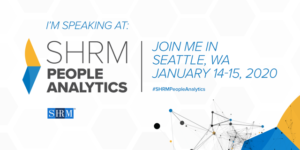
P.S. Don’t forget that the Society for Human
Resource Management (SHRM) is hosting their first People
Analytics Conference. It’s scheduled for January 14-15,
2020 in Seattle. HR Bartender readers can get 50% off the regular registration
rate using the code PA20SHARLYN. I’m planning to be there. Hope to
see you!!
The post People Analytics: How to Solve Business Problems appeared first on hr bartender.






December 29, 2019
Employee Retention Will Continue to Be Top Priority for Organizations in 2020
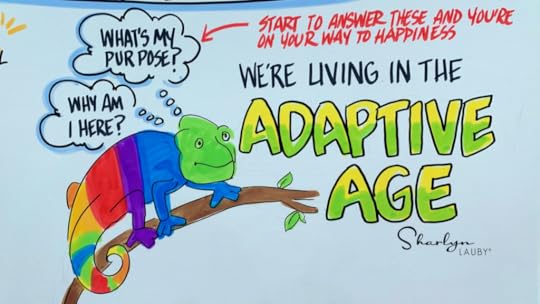
I’m sure the title of today’s article is no surprise to
anyone. When it comes to the game of business, the winners are those
organizations that can hire, engage, and retain the best talent. Everyone knows
retention is important.
The challenge with employee retention is knowing how to deal
with it. What steps should we take to reduce turnover and improve retention?
Here are a few articles that can help organizations create an optimal employee
retention strategy.
Turnover 2019: Why
Employees Leave
Turnover is a critical issue facing
business today. Recruiting efforts struggle when turnover is high. Here are the
results from an HR Bartender survey showing the top 5 reasons why employees
leave their jobs.
Strategic
HR Management: 4 Activities That Help Reduce Turnover
Proactive and strategic HR
management is a key part of business success. Find out four ways that HR can
help reduce turnover and achieve business goals.
Flight
Risk? Stay Interviews Can Alert Managers
Stay interviews could help managers
identify employee flight risks. Technology can facilitate having regular, open
communications between managers and employees.
Employee
Turnover: Solve It Using 4 Levels of Analytics
Analytics offers useful tools to
help HR manage critical issues. Use these 4 levels of analytics to solve the
problem of employee turnover.
Employee turnover is expensive. I don’t know that it’s
realistic to think that organizations will have zero turnover. But that doesn’t
mean all turnover is acceptable. Companies need to decide how much turnover is
okay for the company and work toward keeping their turnover numbers within an optimal
range.
That involves having discussions about the drivers of employee retention and making an organizational commitment to retain employees. Companies ready to address employee retention must do more than simply talk about it. Or just create a program. Employee retention involves employee development, management training, competitive pay and benefits, and regular rewards and recognition. It won’t happen overnight. And finally, it’s a commitment that organizations need to focus on always.
Image captured by Sharlyn Lauby while exploring the SHRM Annual Conference in Las Vegas, NV
The post Employee Retention Will Continue to Be Top Priority for Organizations in 2020 appeared first on hr bartender.






December 22, 2019
Why HR Should Pay Attention to Predictive Analytics
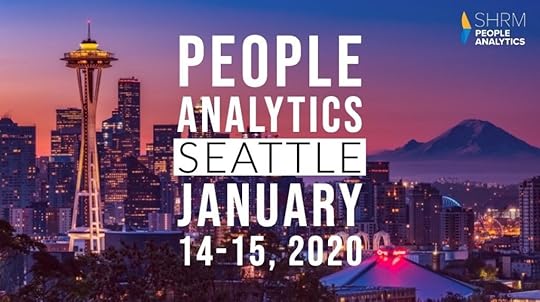
This is the time of year for predictions. One of the things that shows up fairly consistently on HR related trends articles includes predictive analytics. So, what exactly are predictive analytics and why should we pay attention to them?
I like to think of it this way: HR metrics tell you what
happened in the past. For example, time to fill or cost per hire. Both of these
metrics are valuable, and I believe HR departments should be calculating them,
but they’re not all the information we might need to make business decisions.
Where HR metrics provide us a look at what we’ve done, predictive analytics offer insights into the future. It’s focused on probabilities and impact, so it provides flexibility to the organization’s needs. I know, that sounds like a tall order. I’ve been trying to learn more about predictive analytics so I picked up a copy of the book “Predictive Analytics for Human Resources” by Jac Fitz-enz and John Mattox. (Fitz-enz’s book “How to Measure Human Resource Management” is my go-to book for HR metrics.)
Predictive analytics measures the three things business
people talk about the most: efficiency, effectiveness, and outcomes.
Efficiency
measurements include some we already calculate such as average number of days
to fill a requisition and cost per hire. Effectiveness
measurements might contain new hire performance ratings, engagement survey results,
and exit interview data.Outcomes
measure profitability, productivity, and retention.
There are times when today’s business environment is moving
so quickly that we cannot always be focused on what’s happened in the past. We
have to give equal time (and some might argue more time) to what we think is
going to happen in the future and plan accordingly. That’s where predictive
analytics comes in. It’s what you do
with the information you gather. Predictive analytics is about the connection between
these three types of measurement mentioned above. Here are a few examples:
Number of open hires (efficiency) – Quality of
hire (effectiveness) – Length of employment (outcome)
Average cost per hire (efficiency) – Cultural
fit (effectiveness) – Contribution to product quality (outcome)
Amount of training attended (efficiency) – Hi/lo
potential status (effectiveness) – Increased profit margin (outcome)
I’ve written in the past about the
need for HR pros to focus on their analytical abilities. If you’re looking
for a way to increase your skills, wrapping your arms around predictive
analytics might be a good place to start because HR metrics aren’t going away
and neither are predictive analytics.
In fact, an increasing number of HR
departments are designing analytical roles. If you’re looking for a job in
human resources, knowing something about predictive analytics will be
important. HR wants to be on the front-end of this trend. Because it’s not
going away anytime soon. If ever.
Speaking of staying on top of predictive analytics, the Society for Human Resource Management (SHRM) is hosting their first People Analytics Conference. It’s scheduled for January 14-15, 2020 in Seattle. HR Bartender readers can get 50% off the regular registration rate using the code PA20SHARLYN. I’m planning to be there. Hope to see you!!
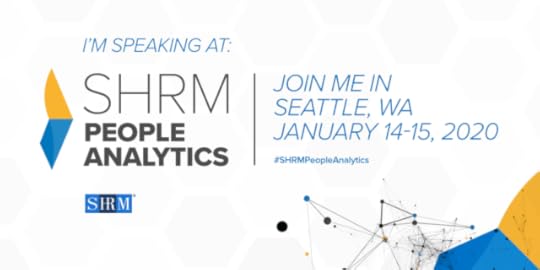
The post Why HR Should Pay Attention to Predictive Analytics appeared first on hr bartender.






December 19, 2019
Managers Might Want to Empathize with Employees More
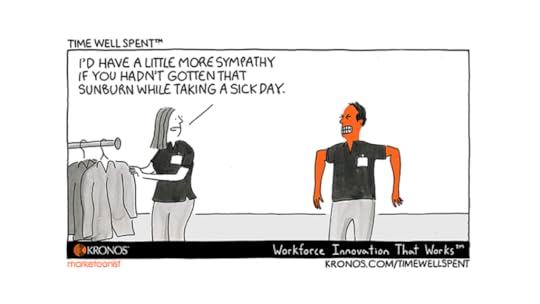
Let me start by saying that getting a sunburn
is no joking matter. We need to take care of our skin by using sunscreen, applying
moisturizers, and getting regular check-ups at the dermatologist.
That being said, I can empathize with today’s Time Well Spent
from our friends at
Kronos. I’ve had plenty of sunburns in my life. So,
I understand how painful a sunburn can be. I’ve also played hooky from work
once or twice. Put the two together and you have today’s cartoon.
But that wasn’t the real takeaway for me. Today’s Time Well Spent was less about employees calling in sick and going to the beach. We know that happens. For me, I was reminded of that moment in my early career when I was that sunburned employee. And how, maybe instead of sympathy, managers should empathize more because they’ve probably been there too.
Be open to last-minute schedule changes. Organizations that allow last-minute shift changes or scheduling adjustments might be able to mitigate employees calling out when they’re not really sick. I realize this involves some extra effort, but it could be totally worth it to avoid scrambling around trying to cover the work when an employee calls out.
Let employees know they can communicate with you. I’m talking about trusting positive relationships. When employees feel they have a good relationship with their manager, they will be much more open to confiding in them. “Hey, I’d really love to find a way to take a day off. Can you help?” or “I’m going to see Randy Rainbow in concert on Sunday and would like to come in late on Monday. Is that okay?”
Don’t be wishy-washy when the answer is “no”. The first two points I’ve made here are about managers being more flexible. But I do understand there are times when flexibility isn’t an option. Don’t be afraid to tell employees that. They will respect you for it. Managers don’t need to be mean or grouchy about it. But do be clear. The last thing you want is for an employee to misinterpret your comments and think it’s okay to show up late (or not at all).
Ultimately, managers should try to be flexible when they can. And let employees know when they can’t. If employees know they can count on their manager to do these two things, then I have to believe that employees will respect the answer and abide by it. Maybe it’s time for managers to remember and empathize about what it was like when they were just starting their careers. When they desperately wanted to play hooky and go to the beach. For that matter, maybe there are a few managers who can empathize with employees because they would love to do that right now.
The post Managers Might Want to Empathize with Employees More appeared first on hr bartender.






Sharlyn J. Lauby's Blog
- Sharlyn J. Lauby's profile
- 10 followers



